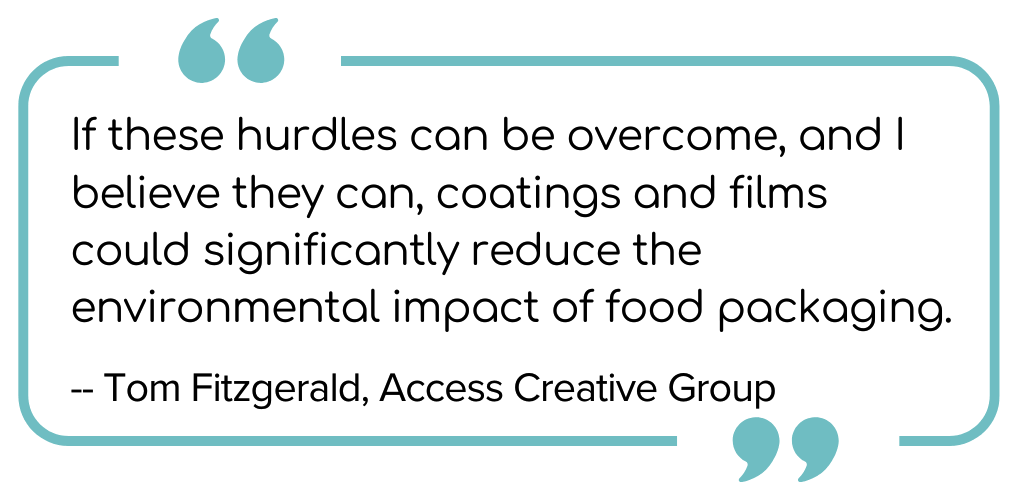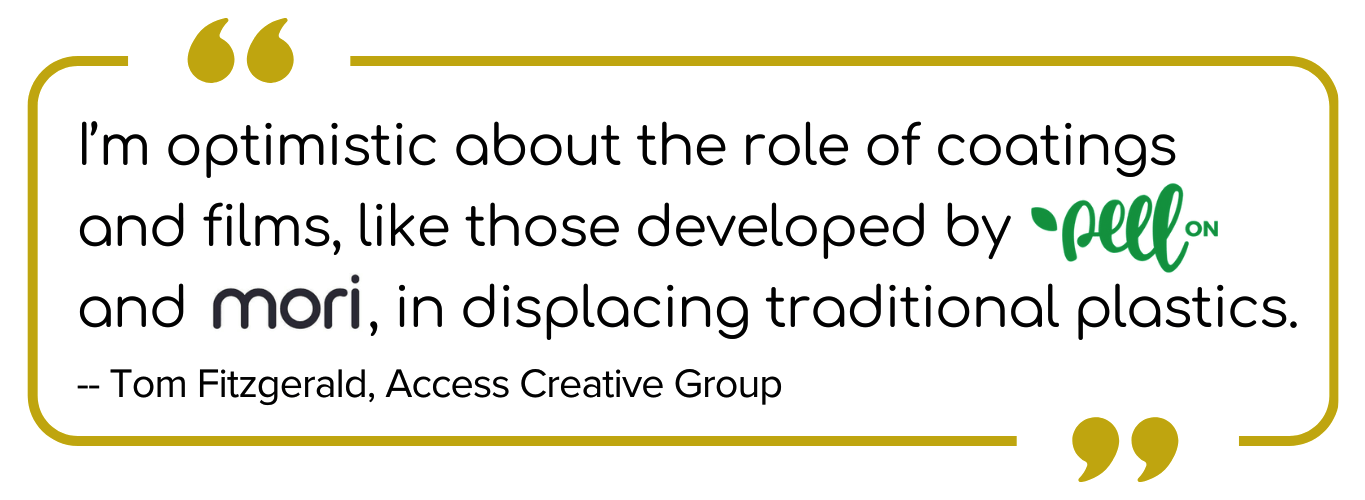Navigating Complexity: Advanced Insights into Sustainable Packaging
/With consumer demand for eco-friendly options at an all-time high, switching to sustainable packaging has become essential for brands aiming to stay competitive and meet growing expectations. A recent survey showed that 92% of consumers say that sustainability is an important factor in their shopping decisions. For brands, investing in sustainability where it matters most can be a key differentiator from competitors. Packaging, as one of the most visible elements of a brand’s sustainability efforts, offers a prime opportunity to deliver on consumer purchase drivers and align with their values.
In the first part of this series, we explored the broad trends shaping sustainable packaging, highlighting brands’ opportunities to drive both innovation and efficiency when they transition to sustainable packaging. In this second part, we’ll take a closer look at how companies can lower their carbon footprint, understand the link between consumer behavior and avoidable food waste, get started on implementing sustainable packaging solutions, and much more.
We are excited to once again have Tom Fitzgerald, owner of Access Creative Group, answer our questions. There is no one-size-fits-all approach to sustainable packaging solutions — what works for one product or company may not be suitable for another. With Tom’s guidance, we’ll dig deeper into how brands can navigate packaging challenges and put sustainable principles into practice.
In our recent webinar, Sustainably Nourishing Tomorrow: A Collaborative Approach for Global Impact, we heard from corporate leaders about the increasing importance of mono-materials. Can you tell us what they mean for the future of packaging?
Traditional packaging often consists of multiple layers of different materials bonded together, making it difficult, if not impossible, to recycle effectively. Mono-materials, on the other hand, are made from a single type of material, which can be processed more easily within existing recycling systems. Mono-materials are an important part of the future of packaging, primarily because they simplify the recycling process.
The shift towards mono-materials is driven by the need for more efficient and effective recycling processes, as well as increasing regulations that require higher recycling rates. By simplifying the material composition of packaging, companies can not only improve the recyclability of their products but also reduce costs associated with waste management and compliance.
Moreover, mono-materials align well with the principles of a circular economy where materials are kept in use for as long as possible. They are particularly promising in industries like food and beverage, where maintaining product integrity while ensuring environmental responsibility is critical.
Carbon footprint and plastic waste are two sustainability metrics for packaging that are often at odds. For example, glass is more frequently and easily recycled and reused, but plastic still has a smaller carbon footprint because it is not energy-intensive to produce or transport. How should companies weigh this tradeoff?
How can brands balance their carbon footprint with the environmental impact of plastic waste? Image Source: Canva
This is a classic dilemma in sustainable packaging — balancing the carbon footprint with the environmental impact of waste. Companies should start by evaluating the entire lifecycle of the packaging materials they use, from production to disposal. Life Cycle Assessments (LCAs) can provide valuable insights into the overall environmental impact of different materials.
It’s important to consider the specific context of the product. For example: glass might be the better option for products that require a high level of protection and where the product’s shelf life is critical. In contrast, for products with a shorter shelf life or those that are shipped in large quantities, plastic might be more appropriate due to its lower carbon footprint during transportation.
Companies should also consider their waste management infrastructure. If the local recycling facilities are well-equipped to handle glass, then its higher recyclability may outweigh the benefits of plastic’s lower carbon footprint. Conversely, in areas where plastic recycling is more efficient, plastic might be the better choice.
There’s no one-size-fits-all answer. The best approach is often a hybrid strategy that combines different materials based on their environmental trade-offs and the specific needs of the product.
According to ReFED, “6% of greenhouse gas produced in the US is from food waste, more than the entire aviation sector.” Can you tell us more about how packaging plays a role in reducing food waste?
Effective packaging can provide consumers with the right portion sizes, protect food during transportation, and extend the shelf life of food products, all of which reduce food waste.
For example, packaging that offers reseal-ability or portion control can help reduce food waste at the consumer level. By allowing consumers to use only what they need and keep the rest fresh for later, packaging can directly contribute to minimizing waste.
Smart packaging can monitor the condition of the food and provide real-time information to consumers, which not only helps in reducing waste by ensuring that food is consumed before it spoils, but also empowers consumers to make informed decisions about their food consumption.
Modified Atmosphere Packaging (MAP) and vacuum sealing are great examples of how packaging can maintain freshness and extend the shelf life of perishable goods. Advanced barrier technologies can prevent spoilage by controlling moisture, oxygen, and light exposure, which are key factors in food degradation.
Branchfood’s sister company, Branch Venture Group, is invested in two companies that extend the shelf life of food: PeelON, which makes a biodegradable film, and Mori, which makes a protective food coating. Are you optimistic about the opportunity for coatings and films to reduce the need for plastic?
Biodegradable films and protective coatings can serve as a more sustainable alternative to plastic wraps and other single-use packaging solutions. They help maintain food quality, reduce spoilage, and can be tailored to degrade naturally after their useful life, addressing the issue of plastic waste.
I’m optimistic about the role of coatings and films like those developed by PeelON and Mori in displacing traditional plastics. These innovations represent the next frontier in sustainable packaging, particularly because they offer the dual benefits of extending shelf life while reducing reliance on plastic.
However, for these technologies to truly displace plastic, they need to be scalable, cost-effective, and compatible with existing packaging systems. There’s also the challenge of consumer acceptance — people need to trust that these new materials will protect their food just as well as traditional plastics.
If these hurdles can be overcome, and I believe they can, coatings and films could significantly reduce the environmental impact of food packaging. The key will be continued innovation, investment in research and development, and collaboration across the supply chain to bring these solutions to market at scale.
Where do you see the greatest need for innovation in sustainable packaging? What do you think are the next big trends in packaging?
The greatest need for innovation in sustainable packaging lies in developing materials that balance performance, sustainability, and cost. While we’ve seen significant advances in biodegradable materials, compostable options, and mono-materials, there’s still a need for new solutions that can meet the demands of various industries without compromising on sustainability or functionality.
One of the next big trends I foresee is the rise of smart packaging technologies, like sensors that can monitor the freshness of food, indicators that change color based on product conditions, and QR codes that provide detailed information about the product’s origin, carbon footprint, and recycling instructions. Smart packaging can enhance sustainability by reducing waste, improving supply chain transparency, and engaging consumers in more meaningful ways.
Another emerging trend is refillable and reusable packaging systems, especially in the personal care and household product sectors. Brands are starting to explore models where consumers can refill their containers at designated stations or receive products in durable packaging designed for multiple uses.
Lastly, the integration of AI and machine learning in packaging design and supply chain management will play a crucial role. These technologies can optimize material use, reduce waste, and improve the overall sustainability of packaging operations
Smart packaging will soon be able to tell consumers when their food is no longer fresh, rather than relying on sell-by dates. Image Source: Canva
Are there any resources or thought leaders you follow to stay on top of the changing landscape?
Staying informed in the fast-evolving world of sustainable packaging is crucial. For industry insights, I recommend keeping an eye on the Sustainable Packaging Coalition and the Ellen MacArthur Foundation, which provide excellent resources and case studies on circular economy principles. Publications like Packaging World and Sustainable Brands offer up-to-date news and trends.
In terms of thought leaders, I’d suggest following figures like Terracycle’s Tom Szaky, who has been a pioneer in zero-waste packaging solutions.
Lastly, academic institutions such as the MIT Environmental Solutions Initiative and the University of Cambridge’s Institute for Sustainability Leadership offer cutting-edge research and thought leadership that can provide deeper insights into the challenges and opportunities in sustainable packaging.
Sustainable packaging might just be the secret ingredient that your product is missing. A 2023 report shows that over two-thirds of shoppers now consider sustainability more important than they did just two years ago, a shift that is reshaping how companies and consumers consider the environmental, social, and economic consequences of packaging. This complex topic has the potential to engender deeper brand loyalty but there is no one-size-fits-all strategy when it comes to sustainable packaging.
If you are interested in exploring how your company can take advantage of rising interest in sustainable packaging, we are happy to put you in touch with Access Creative Group. Packaging innovation is an exciting, ever-evolving field, and Tom remains our go-to expert for navigating this space.





























